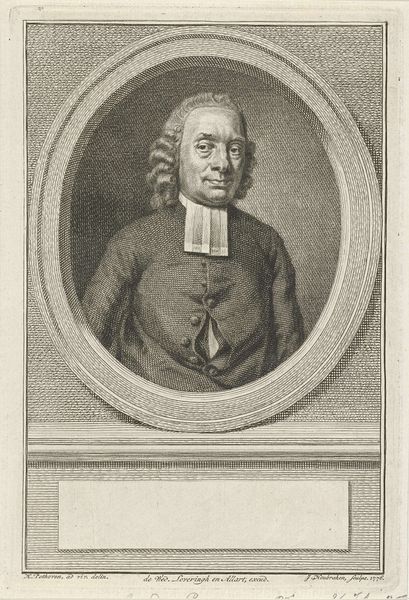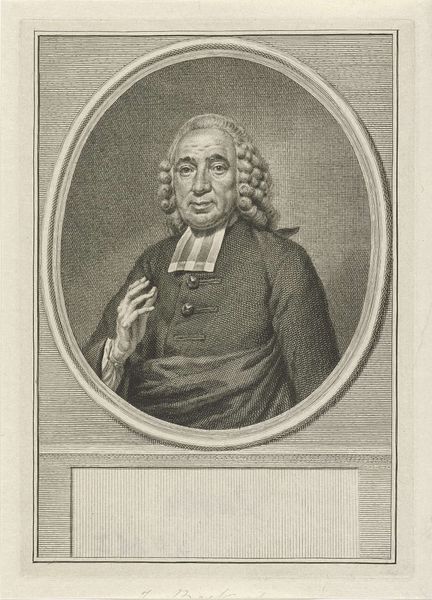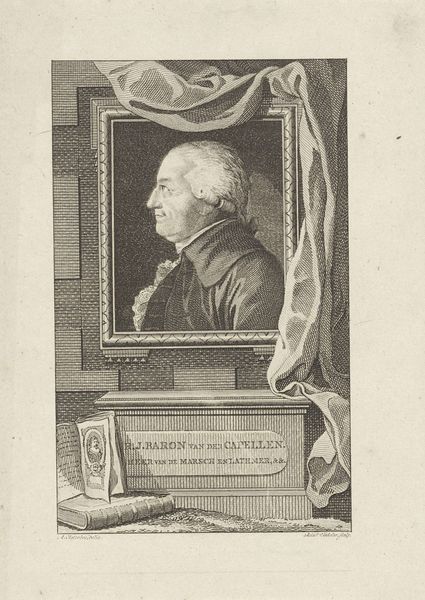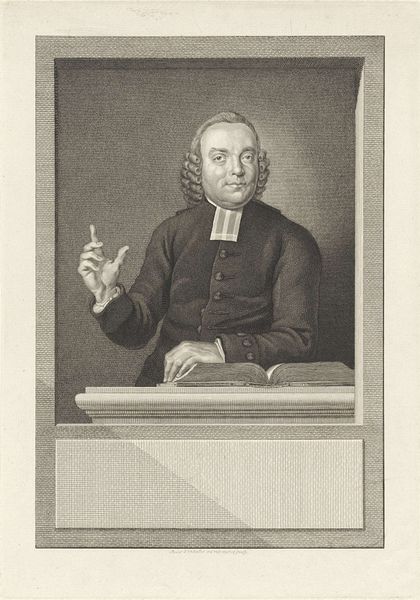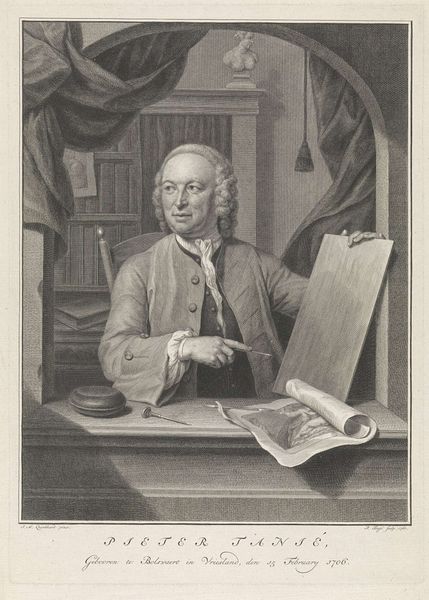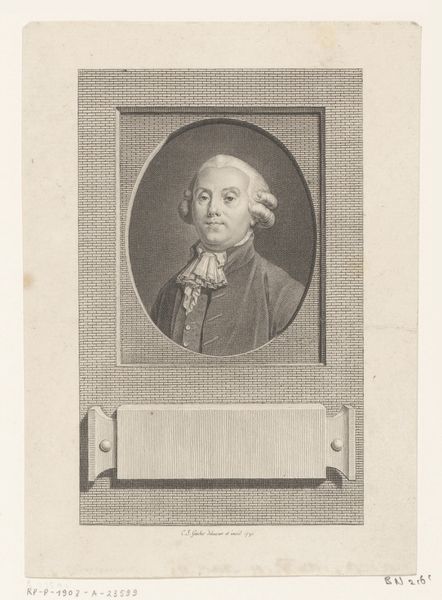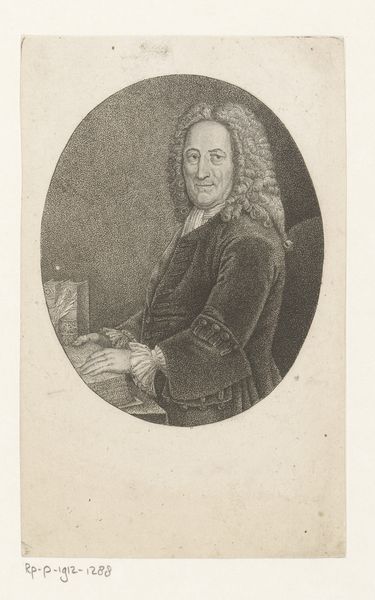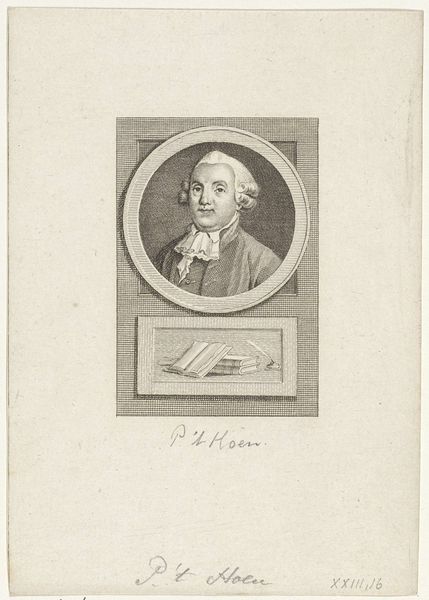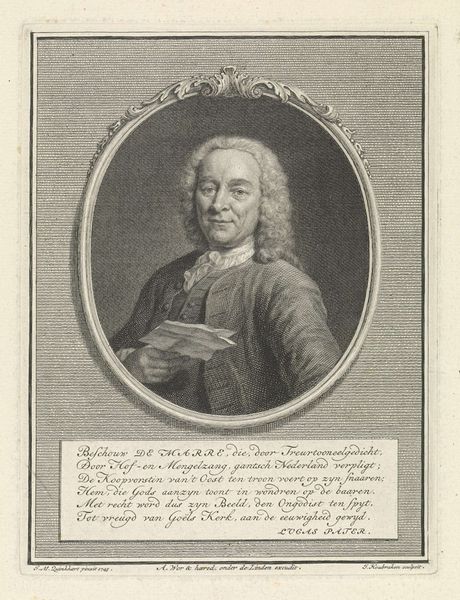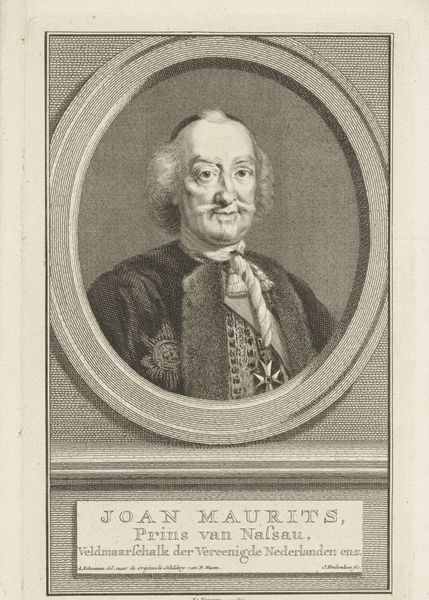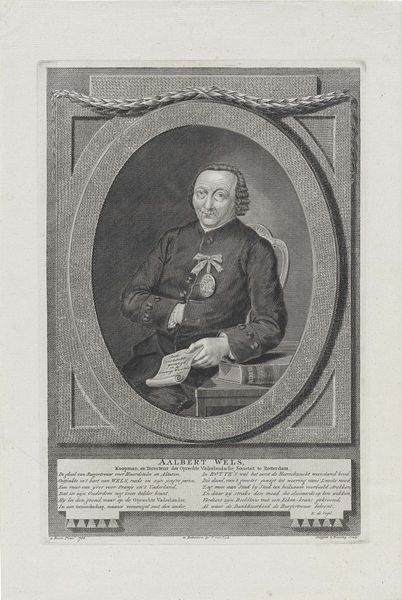
#
aged paper
#
wedding photograph
#
yellowing background
#
photo restoration
#
archive photography
#
historical photography
#
portrait reference
#
old-timey
#
yellow element
#
19th century
Dimensions: height 368 mm, width 256 mm
Copyright: Rijks Museum: Open Domain
Editor: This is Reinier Vinkeles' 1792 engraving, "Portret van Petrus Broes," currently held at the Rijksmuseum. There's a real sense of formality, almost severity, in the portrait's composition. What elements stand out to you, and how do you interpret this work within its historical context? Curator: Well, let's consider the socio-political landscape of the late 18th century in the Netherlands. This was a time of intellectual ferment, with Enlightenment ideals challenging established religious and social structures. The subject's attire, his positioning behind a book - likely religious scripture - and that raised index finger suggests authority and perhaps a gentle warning. What kind of role did the subject play in society at that time? Editor: Good question. I imagine Petrus Broes had some standing within the church and the community. Curator: Precisely! This image serves not just as a personal commemoration but also as a declaration of his role within the community. The print medium itself democratizes the image, making it accessible to a wider audience than a painted portrait. Does that alter the perception and the goal of such portraits, compared to oil paintings destined for private collections? Editor: Absolutely, mass production makes it public. So, this isn't just about preserving the likeness of Petrus Broes, but solidifying his public image and potentially promoting the values he represents. Curator: Exactly. Consider also how museums and galleries subsequently shape our understanding of historical figures like Broes, framing him and others within a carefully curated narrative of the past. The way the artwork is displayed directly influences the viewers understanding of the image and of the person portrayed. Does seeing it now at the Rijksmuseum make it even more legitimate? Editor: That's so true. I hadn't thought about it like that before - how the location changes it. Seeing it in the museum definitely adds layers of meaning I didn't consider. Curator: Indeed. It’s crucial to question the motives behind historical imagery, understanding who is represented, why, and the mechanisms that perpetuate their stories. It is the artist's role and ours in constructing that imagery. Editor: That makes me rethink how I approach analyzing portraits! Thank you for pointing out these socio-historical factors; it provides a much richer understanding.
Comments
No comments
Be the first to comment and join the conversation on the ultimate creative platform.

